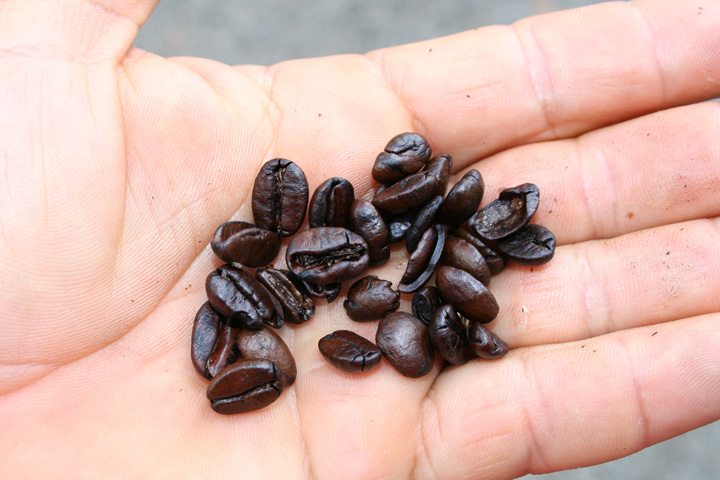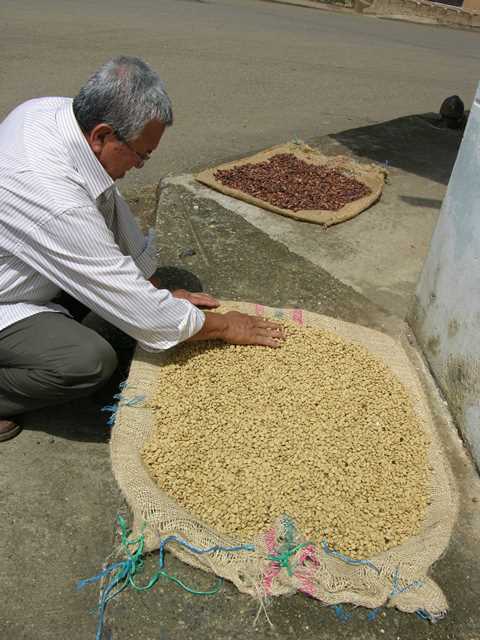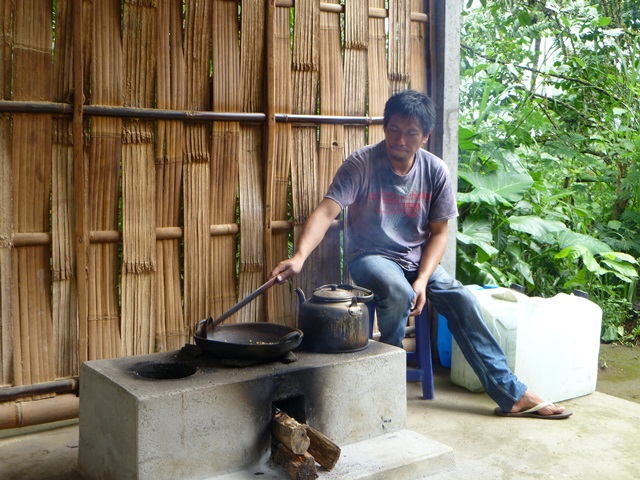Growing Coffee Plants in South Florida

BY NORIS LEDESMA
FAIRCHILD TROPICAL BOTANIC GARDEN
As published in the Miami Herald
Coffee
(Coffea arabica) is native to central
and is grown commercially in more 80 countries. It is one of the major
horticultural crops traded throughout the world. Coffee also makes an
attractive evergreen tree for South Florida with
dark, glossy leaves and shiny red berries.
If
you're one of those people who can't live without your cup of coffee in the morning
and you are up for a “green” challenge, then consider growing and producing
your own cup of joe. Growing coffee plants at home is a rewarding experience
that will help you learn and appreciate the work involved in its production.
Start from your own seed, which are easy to propagate, or you can find plants available
in local nurseries in our community.

Coffee
grows between 28 degrees North and 30 South of the equator and some of the
major growing areas include Central America, the Caribbean, Brazil, East and West Africa, Madagascar
and Indonesia.
There are numerous varieties of coffee, derived from Arabica, Robusta or Liberica
races and hybrids between these three. The Arabica race is best adapted to
growth in South Florida.
Coffee
plants are usually grown under shade but may be grown in full sun if given
proper care. Here in South Florida it is best
to opt for a protected area free of wind and providing partial shade. Enrich
soil with compost and manure in a thick mulch to reduce weeds. Protection must
be provided from strong winds and watering at least once a week in dry times is
always a good idea.
Cold
protection must be provided for young trees by covering the entire tree with a
blanket or with the use of a large cardboard box. Thoroughly watering the area
around your tree on the day of cold danger will also help to protect it. The well-watered
soil will absorb more solar radiation than dry soil, radiating heat during the
night. Take care not to let the blanket or box touch the leaves.
A
granular fertilizer like 8-3-9 or similar formulation should be applied in June and August. The granular
fertilizer should be spread lightly below the drip line. A foliar minor element spray and chelated iron
drench can be done in June and August to improve the growth of the tree. Iron
chelate is expensive, but under South Florida
conditions it will make a large difference in performance of your bush.
The coffee tree can live for about 50 to 70
years. In South Florida the white flower
clusters appear during the summer with a delicate fragrance perfuming the home
garden. The fruit ripen in the fall, with a sweet pulp surrounding the bean. Fruit
should be harvested when bright red and each fruit contains two beans. The
fruit do not all ripen at one time and you should only harvest the fruit when
they are ripe and red.

Processing coffee
beans at home
1. Harvest: harvest red
berries and remove the seeds.
2. Fermentation: Pour the seeds in water for 3 days for fermentation.
The fermentation process is thought to accentuate the body and flavor of the
coffee beans.
3. Drying: Remove the water and dry the seeds in the sun. The drying process takes 2 days, and
during that period the color changes from reddish brown to light brown.

4. Roasting:
Coffee beans can be roasted in your oven at home. Place them in a
pre-heated, 250 F oven for about seven minutes. Then increase the oven
temperature to 450 F. In about ten minutes the beans should begin to crackle.
(This timing will depend on the temperature, heat capacity of the oven, and the
beans; so keep an eye on them.).

When the beans start crackling, mix them up to promote an
even roast. Check their color every two minutes until they have achieved a
color slightly lighter than the end color which you desire. (As the beans cool,
they will continue roasting).
5.
Winnowing: Let them cool and separate the beans from the hulls. When they
have completely cooled, store them in an air tight container in the
refrigerator.
6. Grinding:
Place the beans in a coffee grinder. After grinding, store the coffee at room
temperature in a plastic container.
So, kick back, pour yourself a cup of home-grown coffee –
enjoy!
Noris Ledesma is curator of tropical fruit at Fairchild Tropical Botanic Garden.
